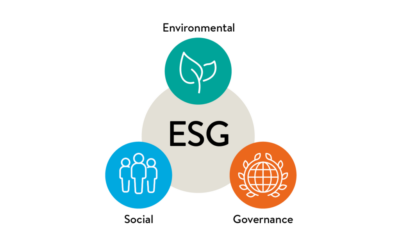Two of the most important skills of a commercial lawyer in adding real value to any contracting process are (i) the ability to draft (well), and (ii) the ability to negotiate (well). Looking at current developments, it seems to me that unfortunately AI may sooner or later erode the need to be able to do the former (i.e. draft well). However, I suspect that lawyers will continue to be able to make a significant contribution to the contracting process if they are able to do the latter (i.e. negotiate well).
Countless books have been written on different negotiation methods and how to apply these. One method that stands out and continues to be influential is that of ‘Harvard Negotiation’. Having had the opportunity earlier this week to attend a workshop on Harvard Negotiation hosted by the NGB, and reading up on the topic some more afterwards, I wanted to share my following top-three takeaways about Harvard Negotiation with you:
- What is it, and who developed it?
- How does it work, and what are its key principles?
- What makes it different to other negotiation methods?
Who developed Harvard Negotiation and What Is It?
Harvard Negotiation was developed in the 1970s by a group of academics and practitioners at Harvard University, including Roger Fisher, William Ury, and Bruce Patton. They founded the Harvard Negotiation Project and published their seminal book “Getting to Yes: Negotiating Agreement Without Giving In” in 1981. This book is still a bestseller 40 years on.
The Harvard Negotiation strategies and techniques emphasize principled negotiation, focusing on interests rather than positions, creating win-win outcomes, and maintaining effective communication. Adhering to the Harvard negotiation approach can lead to more durable agreements and stronger relationships between parties. Numerous success stories and case studies demonstrate the effectiveness of the approach across different industries and contexts. Let’s take a more detailed look at the principles of Harvard Negotiation.
The Principles of Harvard Negotiation
The key principles of Harvard Negotiation include the following:
- Separate the persons from the problem: Focus on the issues at hand, not on personal attributes or emotions. Recognize that emotions and ego can stop you from seeing the other party’s position clearly.
- Focus on interests, not positions: Identify underlying needs and concerns rather than sticking rigidly to specific demands.
- Generate options for mutual gain: Brainstorm creative solutions that satisfy both parties’ interests. The key to finding options for mutual gain is understanding that shared interests lie at the heart of negotiation.
- Insist on using objective criteria: Base agreements on objective standards, such as market value or industry standards, to ensure fairness and legitimacy. Having regard only to facts that are independent of the people involved in the negotiation, assists in avoiding positional tug-of-wars.
- Know your BATNA (Best Alternative to a Negotiated Agreement): Understand and develop your alternatives to reaching an agreement to assess the strength of your position. The better your BATNA, the greater your power. To develop a BATNA, it is suggested to: Brainstorm a list of alternative actions to take if you don’t reach an agreement; work on improving your best options; and select your best option. A good BATNA reduces the dependency on the other party – and vice versa.
Applying these principles helps negotiators build trust, improve communication, and reach agreements beneficial for all parties involved. This focus of Harvard Negotiation is different to that of some traditional negotiation methods.
The Differences of the Harvard Negotiation Principles
Harvard Negotiation principles differ from some traditional negotiation methods as follows:
- Focus on interests: Unlike traditional approaches that often focus on positional bargaining (each side stating their demands and making concessions), Harvard Negotiation emphasizes identifying underlying interests and needs to find solutions that satisfy both parties.
- Problem-solving orientation: Harvard Negotiation encourages a problem-solving approach rather than an adversarial one. This can lead to more collaborative and mutually beneficial outcomes.
- Preservation of relationships: By separating people from the problem and fostering open communication, Harvard Negotiation aims to preserve and even strengthen relationships between parties, whereas some traditional methods may strain relationships due to confrontational tactics.
- Criteria-based agreements: Harvard Negotiation encourages the use of objective criteria to guide the negotiation process and ensure fair outcomes. This differs from some approaches that rely solely on subjective factors or power dynamics.
- Emphasis on preparation: Harvard Negotiation emphasizes thorough preparation, including understanding one’s own interests and alternatives, as well as those of the other party. As part of this preparation, it is key to never enter a negotiation without a BATNA, and without knowing what you’ll do should you not reach an agreement.
Conclusion
Understanding, mastering and applying the principles of Harvard Negotiation can profoundly enhance the effectiveness of commercial contract lawyers in successfully negotiating complex contractual agreements. By focusing on interests over positions, fostering open communication, and striving for mutually beneficial outcomes, negotiators can forge stronger agreements while preserving vital relationships.
Comments or questions? Let me know!
Gundo Haacke, Interim Legal Counsel & Owner of Haacke Commercial Legal Services.
Blog article first published on 26 April 2024.
Image credit: Aurelia Nobleia.




